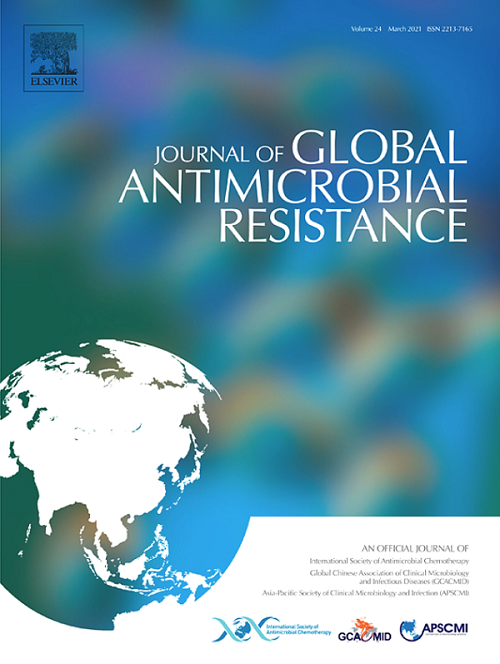Ceftazidim-avibactam susceptibility of carbapenemase producing enterobacterales in an OXA-48 endemic area
IF 3.7
3区 医学
Q2 INFECTIOUS DISEASES
引用次数: 0
Abstract
Background
Carbapenem-resistant Enterobacterales (CRE) are included in the critical priority pathogens by WHO. OXA-48 is the predominating carbapenemase in Türkiye, in where carbapenem resistance rates are high, particularly in Klebsiella pneumoniae isolates. Ceftazidime-Avibactam (CAZ-AVI) has been used successfully in CRE infections in recent years, but resistance is reported to be on the rise.
Aim
To evaluate the susceptibility to CAZ-AVI in CRE isolates and association of CAZ-AVI resistance and carbapenemase genes.
Methods
CRE isolates from various clinical samples between January 2022 and June 2024 were included in the study. The isolates were identified by VITEK-MS(bioMerieux, France) system. Antibiotic susceptibilities were determined by VITEK COMPACT 2(BioMerieux, France) and CAZ-AVI susceptibility was evaluated by disk diffusion method(Oxoid, Thermo Fisher Scientific, Canada) according to EUCAST criteria. Carbapenemase genes were investigated in 324 representative isolates using Biospeedy Carbapenem-Resistance qPCR kit(Bioeksen, Türkiye).
Results
The study included 429 CRE isolates. The distribution of CAZ-AVI susceptibility of CRE isolates according to sample type and clinics is shown in Table 1 and Table 2. CAZ-AVI susceptibility of isolates according to carbapenemase genes is presented in Table 3. In total, CAZ-AVI susceptibility of CRE isolates was 76%, while it was 99.5% in non-metallo-beta-lactamase (MBL) producers and 100% in only OXA-48-like producers.
Conclusıons
Despite the increasing resistance in CRE isolates, CAZ-AVI is still a good option for treatment. CAZ-AVI was found to be highly effective particularly in isolates with non-MBL carbapenemase genes. Early detection of carbapenemase type is important in predicting CAZ-AVI susceptibility.
求助全文
约1分钟内获得全文
求助全文
来源期刊

Journal of global antimicrobial resistance
INFECTIOUS DISEASES-PHARMACOLOGY & PHARMACY
CiteScore
8.70
自引率
2.20%
发文量
285
审稿时长
34 weeks
期刊介绍:
The Journal of Global Antimicrobial Resistance (JGAR) is a quarterly online journal run by an international Editorial Board that focuses on the global spread of antibiotic-resistant microbes.
JGAR is a dedicated journal for all professionals working in research, health care, the environment and animal infection control, aiming to track the resistance threat worldwide and provides a single voice devoted to antimicrobial resistance (AMR).
Featuring peer-reviewed and up to date research articles, reviews, short notes and hot topics JGAR covers the key topics related to antibacterial, antiviral, antifungal and antiparasitic resistance.
 求助内容:
求助内容: 应助结果提醒方式:
应助结果提醒方式:


